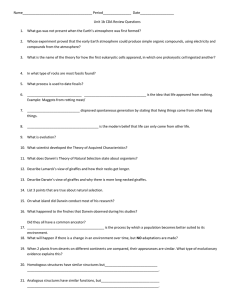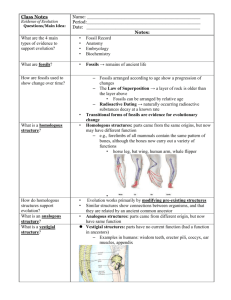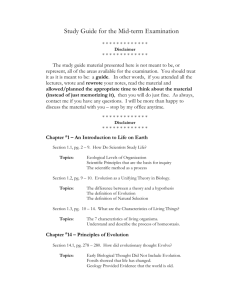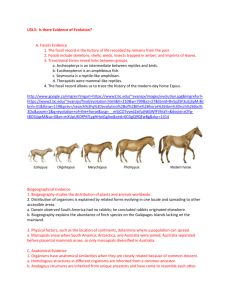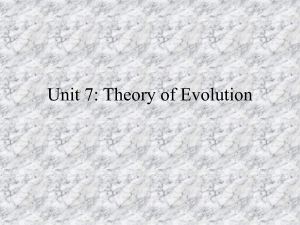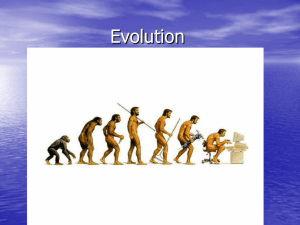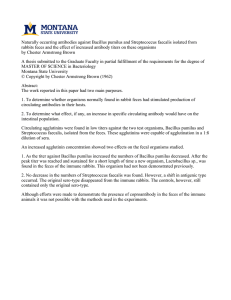Classification and Evolution Review Sheet
advertisement
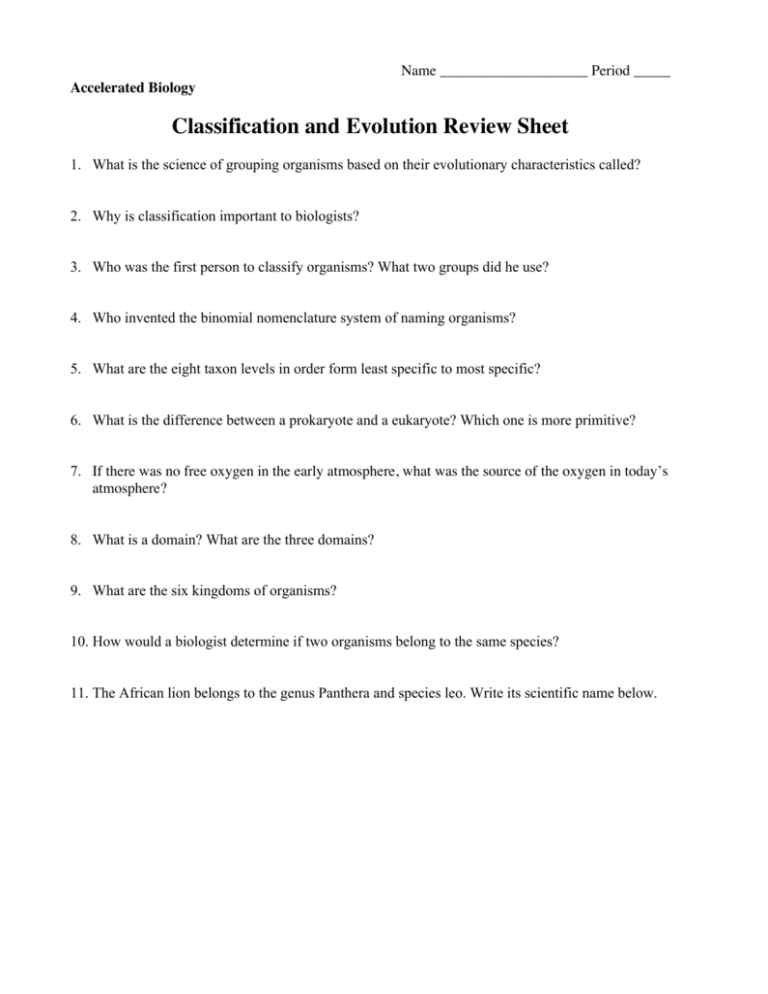
Name ____________________ Period _____ Accelerated Biology Classification and Evolution Review Sheet 1. What is the science of grouping organisms based on their evolutionary characteristics called? 2. Why is classification important to biologists? 3. Who was the first person to classify organisms? What two groups did he use? 4. Who invented the binomial nomenclature system of naming organisms? 5. What are the eight taxon levels in order form least specific to most specific? 6. What is the difference between a prokaryote and a eukaryote? Which one is more primitive? 7. If there was no free oxygen in the early atmosphere, what was the source of the oxygen in today’s atmosphere? 8. What is a domain? What are the three domains? 9. What are the six kingdoms of organisms? 10. How would a biologist determine if two organisms belong to the same species? 11. The African lion belongs to the genus Panthera and species leo. Write its scientific name below. 12. Fill in the chart below. Include the following characteristics: • Unicellular/multicellular • Prokaryotic/eukaryotic Euacteria • How they obtain food • Do they have a cell wall Archaebacteria Protista • Can they photosynthesize • Example organism Fungi Plantae Animalia 13. Define the following terms: Variation – Adaptation – Fitness – Mutation– Evolution – 14. Provide two examples of an adaption for a bird that feeds in the shallow waters of a pond. 15. What is a species? How would a biologist determine if two organisms belong to the same specie? 16. Explain natural selection in the four steps we discussed in class. 1.) 2.) 3.) 4.) ______________________________ = change over time 17. Write a concept generalization using the following terms; overpopulation, variation, survival of the fittest, and competition. 18. What is selection pressure? Provide two examples. 1.) 2.) 19. Explain Lamarck’s theory of Use and Disuse. 20. How was Lamarck’s theory disproven? 21. Compare and contrast Darwin’s and Lamarck’s views about the role of the environment in evolution. (Need vs. Variation) Read the passage below to answer the next three questions. A population of rabbits live in a meadow. Some of the rabbits can run very fast, some can run at an average speed, and some run very slow. One day, several fox enter the meadow and begin to hunt the rabbits. Only the fastest rabbits survive being hunted by the fox. 22. What variation exists in the mouse population? 23. What is the environmental pressure in this example? 24. What adaptation will the mouse population have after many generations? 25. The tortoises shown below are three of the species Darwin found on the Galapagos Islands. Explain the process (in detail) that produced the three different species shown below. 26. Fix this sentence so that it correctly applies to natural selection. Frogs have evolved a longer tongue so they could catch more flies. 27. Correct the following sentence: Humans evolved from apes. 28. Construct graphs that show the three types of selection and the environments that they occur in. stabilizing selection directional selection disruptive selection 29. Describe the following evidence for evolution: fossils – homologous structures – vestigial structures – embryology – DNA – 30. Similar structures that are modified for different functions are called ____________________. Provide three examples of these structures. 1.) 2.) 3.) 31. Structures that are not similar, but serve the same function are called ____________________. Provide two examples of these structures. 1.) 2.) 32. Define vestigial structure. Provide three examples. 1.) 2.) 3.) 33. Explain how vestigial structures help to prove the theory of evolution. 34. The wing of a bird and the arm of a man are ____________________ structures, while the wing of a bat and the wing of a butterfly are ____________________ structures. 35. Do analogous structures provide evidence for the theory of evolution? Explain your answer. 36. What are two methods scientists use to determine the age of fossils? What is the difference between them? 37. Draw four layers of rock strata (labeled J – M). Place M on the bottom and J on the top. If fossils were found in all four layers, in which layer would they be the youngest? The oldest? What is this method of dating fossils called? 38. If a fossil contains 14g of C–14, how many grams of C–14 did it contain 5 half–lives ago? Show all your work! 39. If it takes 5,730 years for one half–life to occur, how old is the above fossil? 40. In what type of rock are fossils most commonly found? 41. Explain the significance of how plate tectonics has shaped the face of the Earth and led to evolution. 42. The ____________________ the percent of DNA that two organisms have in common, the more ____________________ the two organisms are related.
